David Pearce, Editor-in-Chief of Sustainable Microbiology (SMI), the latest scientific journal launched by Applied Microbiology International, talks adaptability, environmental microbiology and life at a polar research station.

How does it feel to be the new editor-in-chief of SMI and how would you describe your role?
It is a privilege and a fantastic opportunity to further the science of applied microbiology. In particular, it gives me the opportunity to help shine a spotlight on those areas of applied microbiology which specifically contribute or have the potential to help deliver the UN SDGs.
What kind of approach will SMI take and what areas do you hope to address?
The two main criteria for publication in SMI are: i) microbiology (hence breadth), and ii) the extent to which the contribution addresses one of the UN sustainable Development Goals (hence impact). We want to showcase the fundamental importance of microbiology and support the UN SDGs.
Essentially, microorganisms are bags of enzymes that respond to and can influence their environment (be that in an animal, plant or abiotic setting) and so the scope is enormous. Individually, microorganisms are small and potentially insignificant, but with astronomical numbers they can have broad impact. Bridging this fundamental gap is a core aim of what we are trying to do.
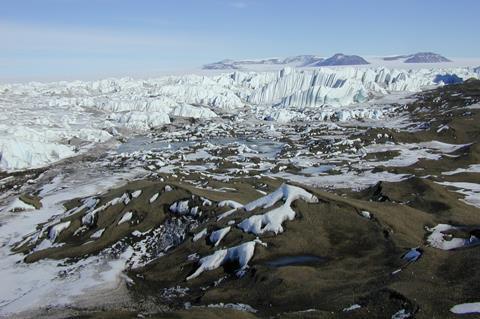
What first sparked your interest in microbiology and how did your career develop?
Up to and during my time at junior school, mechanical and particularly electrical toys got me thinking about how and why things work the way that they do. At high school, I grew to realise that understanding how the world works as a topic is science and some very engaging teachers inspired me at a critical time, when I was motivated by curiosity rather than grades and achievement, but one led to the other.
Going to University, I was torn between Chemistry and Biology, which both appealed, but lucky enough I was able to do both in the first year, then throughout my undergraduate career I followed my interest topic by topic and it led me to specialise in ecology
I was offered the opportunity to do a PhD (funded by the then Agriculture and Food Research Council) which involved asking ecological questions by modelling environmental microbial communities in the lab. This is where I realised the power of applied microbiology and through it, the ability to manipulate complex systems in systematic ways
My first postdoc at CAB International (funded by the then Overseas Development Administration) broadened my perspective, using science to help to resolve real-world challenges and problems, I also learnt that it was not just about the underlying scientific mechanisms and detail but also about economics, politics and human behaviour
My second postdoc, which led on to a subsequent full-time job at the British Antarctic Survey, allowed me to focus. The original rationale being that simple systems in extreme environments were of lower complexity and therefore potentially easier to understand.
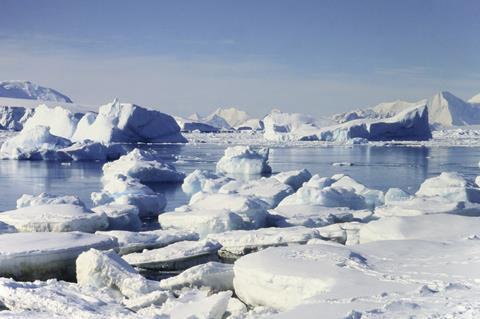
After 15 years at BAS, I made the transition across into the University sector, allowing me to teach more and help develop the microbiologists of the future, sharing in the experience I had gained throughout my career, but also giving me the opportunity to diversify, both in terms of research questions and funding mechanisms
What have been the major landmarks in your career?
Getting into University to study the subject I was most interested in (validation). Getting a PhD position I very much valued, with two supervisors I very much respected (independence). Getting a Post-Doc (international exposure and networking). Getting a job at BAS (focus). Transitioning from BAS to the University sector (education).
In addition, I cannot overlook the people I have worked with (too numerous to mention by name here) – networks and contacts are incredibly important and also flexibility throughout. The environment is always changing, developing so adaptability has enabled me to stay in science
Tell me about your time in British Antarctic Survey and how the role/environment changed over that time?
During my time at the British Antarctic Survey, the focus environment of my research changed, beginning with freshwater lakes, moving on to terrestrial then the marine ecosystems, to the ice, snow and now air, in line with the strategic priorities of the science community though both BAS and the NERC.
During this transition, I have always been an environmental microbiologist, although the tools at our disposal have changed and developed. I also became much more involved in management and broader project development.
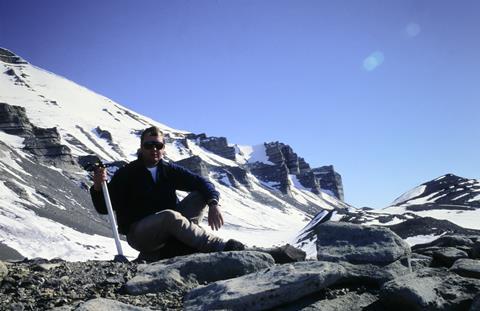
I have spent over three years in total in the Antarctic on numerous field trips to large research stations, small bases, field camps and on a variety of research vessels. Quite apart from being able to see first-hand how these environmental systems work in practice, the periods abroad gave me the ability to focus on the question at hand, and it led me to meet some remarkable people along the way.
What areas of environmental microbiology fascinate you?
The area of environmental microbiology that fascinates me the most is the role of microorganisms in environmental processes. I am currently involved in ten active and diverse research topic areas including polar environments, climate change, air quality, disease transmission, bioprospecting, bioremediation, human microbe interactions, new frontiers including space exploration and resilience and environmental change.
How important do you think the role of applied microbiology could be in solving some of the world’s problems?
Applied microbiology is fundamental in helping to solve some of the world’s problems. Indeed, I would go as far as saying that most applied microbiology will be of relevance to sustainability and rather it is the extent to which it will contribute that is important. For example, in:
- Food security (2 – zero hunger) – maintenance of biodiversity, diversification, stress tolerance, inhibition of pathogens and plant growth promotion
- Net zero (13 – climate action and 7 – affordable and clean energy) - more efficient resource usage, microbial processing of climate active gases, carbon sequestration, enhanced carbon fixation and biofuels
- Clean water and sanitation (6) – enhanced wastewater treatment, decomposition and recycling of waste, biofilms, indicator species and tipping points
- Good health and wellbeing (3) – human microbiome function, human microbiome-environment interactions, new therapies such as phage therapy, improved vaccines and diagnoses, better management of antimicrobials and resistance, new and emerging diseases, early and low biomass detection systems, biosensors, growth and development, food and nutrition
- Healthy oceans (14 – Life below water) – the blue economy, degradation of plastics, microbial responses to emerging challenges such as acidification and new pollutants, symbioses and holobionts, working with industry (deep sea mining and oil and gas decommissioning)
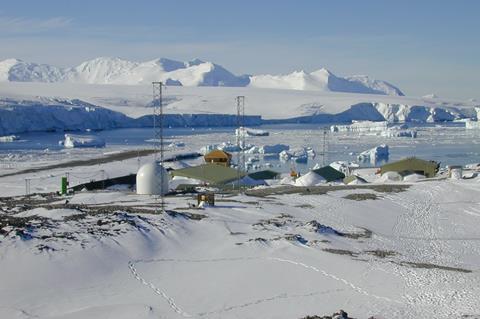
- Healthy land (15 – Life on land) – geomicrobiology, soil formation, colonization, successional processes, the rhizosphere, nutrient management, composting, bioremediation, degradation of toxins, land use priorities
- Wealth Creation (1 – end poverty) – biotechnology and the bioeconomy, new culture and selection methods for microbial dark matter, novel biomolecules and processes, genome mining, bioinformatics, AI and computational advances, genetic engineering, extremozymes, microorganisms in engineering and the built environment
Although it will be clear from the examples listed above, many applied microbiology approaches are relevant to multiple UN SDGs.
How would you advise authors to handle recommendations and criticism of their work from reviewers?
The review process is and always has been very challenging. Indeed, so much so that people often make jokes about the ‘third reviewer’. The editorial team has a very important job to do in encouraging reviewers to review properly, whilst at the same time, they do need to encourage reviewer engagement.
Seen from this perspective, it is essential that authors do not take the comments personally (even if they are) but rather ask the question ‘why has the reviewer chosen that aspect to make a comment on’ rather than focus on the nature in which it has been said.
What advice would you give to people who would like to take on an editorial role with a journal or Society for the first time?
It is a fantastic opportunity to grow and develop as a scientist, to network, to have your ideas challenged and improved in a friendly and supportive environment. You become part of an international community of some of the most knowledgeable and experienced scientists in your field. You also get to see how the process works and step back from it, take it less personally.
What advice would you give to our ECS members, or those looking to submit a manuscript for the first time?
ECS members are our future. Most of us are perfectionists - we hold on to ideas, data and observations for the ‘right’ time, especially as publications are the auditable currency of what scientists do. However, peer review is the best way to benchmark your science and get a feeling for how you are progressing.

Talk to colleagues where you work, show them your draft manuscripts and ask their advice. Then try. If you are unsuccessful, you get constructive feedback, and nobody keeps track of your unsuccessful submissions. If you are successful though, the positive boost it gives you will re-energise your commitment to that line of enquiry.
Can you share with us anything from your experience of juggling work-life balance, particularly in light of the COVID-19 pandemic and/or working from home?
The core challenge in juggling a successful work-life balance is to be able to switch off. This requires practice and most of all awareness. It can be especially challenging when you enjoy your research and you read around the subject during your ‘down’ time. I’d suggest keeping a good record of your time management, for example, in a diary. Most importantly, be honest with yourself.
Face-to-face conferences and workshops are essential and cannot be replaced by on-line working, although spending time at home away from the office can allow you to focus on one activity (a grant application or a manuscript, without interruption). Overall, however, there is no ‘right way’ - everyone is different, and this includes how you work most effectively.
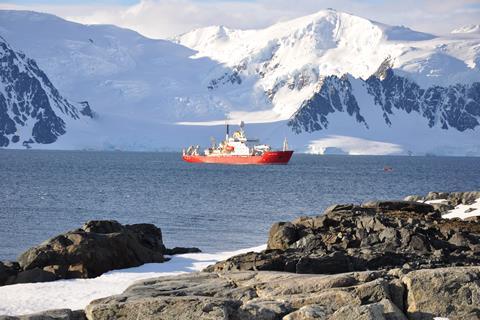
Looking in your crystal ball, what new areas of research can you see emerging in the next few years?
This is a hard question to answer, as we are open to new ideas and developments, so we wouldn’t want to be biased by our own current thinking or experience. However, if pushed, I would have to say: the automation of biodiversity assessments, the development of functional or sequence based taxonomy (e.g. SEQCODE), better understanding the importance of communities and their interactions (particularly with respect to the human microbiome), new knowledge of indicator species and tipping points, the core role of microorganisms in biogeochemical cycling, functional redundancy and resilience, mitigation strategies for living with climate change, a better understanding of microbial “dark matter” including the discovery of new species and their relevance, new therapies and approaches in medicine, early diagnosis and epidemiology, better ways of dealing with antimicrobial resistance and innovation and increase in the use of industrial biotechnology using microbial components.
Is there anything else you would like to add?
Do get in touch – have a conversation.
Supporting documents
Click link to download and view these filesBoating
Image, FileSizeText 4.09 mb
Topics
- air quality
- Applied Microbiology International
- Be inspired
- bioprospecting
- bioremediation
- British Antarctic Survey
- climate change
- disease transmission
- Environmental Microbiology
- extreme environments
- human microbe interactions
- new frontiers
- Ocean Sustainability
- polar environments
- Protecting our oceans
- Publishing
- resilience
- space exploration
- Sustainable Microbiology
- UN Sustainable Development Goals







No comments yet